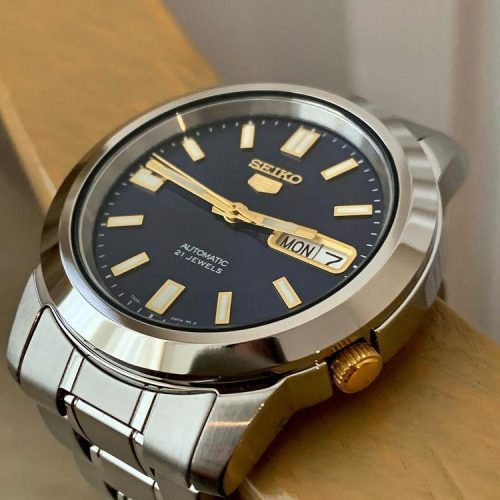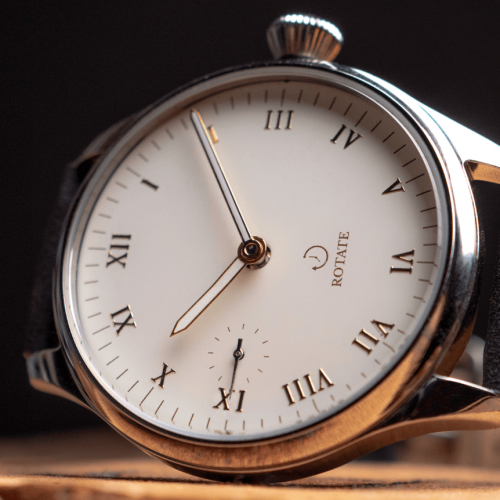A Guide to Watch Crowns: 7 Types to Know
The watch crown is the small button-like piece on the side of the watch that is used to set the time and date. As one of the most important and frequently used components of a watch, the watch crown not only serves a functional purpose but also contributes to the overall aesthetics of the timepiece. Typically made of metal, it is commonly found at the 3 o’clock position, although some watches may have crowns at the 4 and 9 o’clock positions.
In this blog post, we will explore the different types of watch crowns and their unique features as well as discuss how you can use them. Whether you are a watch enthusiast or simply curious about the intricate details of timekeeping, read on to explore the various styles, functions, and types of watch crowns.
Contents
Functions of Watch Crowns
1. Time Setting: The primary function of a watch crown is to set the time on the watch by pulling it out to different positions and rotating it.
2. Date Adjustment: Many watches feature a date function that can be adjusted using the watch crown.
3. Winding: The crown’s other main function is to wind the movement if the watch has a mechanical movement (manual or automatic). Manual movements require you to wind the crown manually to run the movement. When you turn the crown, the mainspring compresses and stores energy to keep the watch running. Although automatic movements are powered by the wearer’s movement, many automatic watches also offer manual winding.
4. Hacking: Some watches have a hacking feature that stops the second hand when the crown is pulled out. This allows for precise time synchronization.
5. Quick-Set Functions: Some watch brands, such as Timex, include a nightlight in their watches, allowing you to see the time even when it is dark. Timex calls it the Indiglo night light. You can turn on the nightlight by pushing the crown. Other complications, such as chronograph,world-timer, GMT, and moon-phase settings, are also accomplished with the assistance of the crown.
6. Rotating Bezel: For watches with an inner rotating bezel, the crown can be used to rotate the bezel in one direction or both directions. This is commonly seen in dive watches for tracking elapsed time underwater.
7. Decorative Element: Beyond its functional aspects, the watch crown often serves as a decorative element, showcasing unique designs, engravings, or brand logos, adding aesthetic appeal to the overall watch design.
Knowing the functions of the crown persuades you of the crown’s significance in the watch. Now we’ll discuss the various types of watch crowns.
Types of Watch Crowns
When discussing the mechanism of the watch crown, it can be divided into two types.
- Pull-Push Crown
- Screw-Down Crown
1. Pull-Push Crown
The pull-push crown is a common type of watch crown that is easy to operate. It is designed with a simple mechanism where the crown can be pulled out to perform various functions and pushed back in to secure it in place. When the crown is in its normal position, it is pushed against the case, ensuring the watch remains water-resistant and protected.
To use a pull-push crown, simply pull the crown out to the first position to adjust the date, or to the second position to adjust the time. When you’re finished, push the crown back in to secure it in place. The pull-push crown is known for its simplicity and functionality, making it a popular choice among watch enthusiasts.
2. Screw-Down Crown
A screw-down crown, like a bolt and nut, screws into the watch case. It is specially designed to protect the watch from water damage, making it ideal for underwater use. The screw-down crown adds an extra layer of security by preventing water from entering the watch case through the crown tube, thereby safeguarding the movement from any potential harm. It is mostly found on dive watches and other timepieces designed for water activities.
How to Wind the Screw-Down Crown?
The Screw-Down Crown usually has three positions for various functions. In the first position, it allows manual winding of the watch movement. The middle position is used for setting the day or date, while the final position, achieved by fully pulling out the crown, is dedicated to setting the time.
Initially, the crown is locked and cannot be pulled out. To unlock it, simply unscrew the crown in an anticlockwise direction. Once unlocked, you can wind the movement by screwing the crown back down in a clockwise direction until you feel resistance, indicating that the mainspring is fully wound. From there, you can adjust the date and time by pulling the crown to the middle and final positions.
After completing the necessary adjustments, push the crown back in and lock it securely. For a visual demonstration of the entire process, you can see a practical video guide below.
Aside from these two basic types of crowns, they also come in a variety of shapes and styles. Some of the most common ones are as follows:
3. Recessed or Inset Crown
The Recessed or Inset Crown is a unique type of watch crown that is designed to sit lower or be partially hidden within the watch case. Unlike traditional crowns that protrude outwards, the recessed crown is set into a small indentation or cavity on the side of the case. This design offers several advantages, both in terms of aesthetics and functionality.

One of the primary benefits of a recessed crown is its reduced vulnerability to accidental impacts and snags. By sitting lower or being partially shielded, the crown is less likely to catch on clothing or other objects, minimizing the risk of damage or unintended adjustments to the watch.
Additionally, the recessed crown contributes to the sleek and streamlined appearance of the watch. It provides a more integrated and harmonious design, enhancing the overall aesthetic appeal. This makes it an ideal choice for those who prefer a minimalist or understated look.
Despite its recessed position, the crown retains its functionality. It can still be operated to set the time, and date, or perform other functions specific to the watch. The exact mechanism for operating the recessed crown may vary depending on the watch model, but it typically involves a combination of pulling, pushing, or unscrewing the crown to access its different positions.
4. Cabochon crown
The Cabochon Crown features a domed or convex surface instead of the traditional ridged design seen in other crown styles. The term “cabochon” refers to a gemstone that has been polished and shaped into a smooth, rounded form without any facets.
The most notable feature of the Cabochon Crown is the presence of a gemstone, typically a precious or semi-precious stone, set at the center of the crown. The gemstone can be a variety of colors, with popular choices including sapphire, ruby, or onyx.

The Cabochon Crown is commonly found in high-end and luxury watches, particularly those from prestigious brands like Cartier. It has become an iconic design element associated with elegance, sophistication, and timeless style. The presence of a gemstone on the crown adds a touch of glamour and serves as a subtle statement of luxury.
5. Onion Crowns
The Onion Crown is a distinctive type of watch crown known for its rounded, bulbous shape resembling an onion. This crown design is popular among vintage and retro-style watches, adding a touch of elegance and charm to the timepiece. The Onion Crown is often larger in size and has etched lines that make it easy to grip even with gloves. However, Its bulky shape may cause discomfort on the wrist to some people.

6. Fluted Crown
The Fluted Crown is a distinctive style of watch crown that is characterized by its spiral or grooved design. It features vertical ridges or flutes that run along the outer surface of the crown, giving it a unique and ornamental appearance.

7. Signed Crown
The Signed Crown is a type of watch crown that bears the logo or signature of the watch manufacturer or brand. It serves as a distinctive mark of authenticity, craftsmanship, and brand identity.

Image Credit: rolex.com
Crown Guards
The crown guard is an extension of a watch’s case that surrounds the crown and protects it from impacts and bangs.
Conclusion:
In conclusion, understanding the different types of watch crowns is essential for watch enthusiasts and collectors. The crown not only serves as a functional component for setting the time and date but also contributes to the overall aesthetics and character of a timepiece. From the classic onion crown to the distinctive cabochon crown, each type has its own unique features and appeal. Whether you prefer a practical and easy-to-grip crown or a luxurious and decorative one, there is a crown style to suit every taste.
By familiarizing yourself with these different types of watch crowns, you can appreciate the craftsmanship and design choices behind your favorite timepieces. So, the next time you admire a watch, don’t forget to pay attention to its crown and appreciate the small but significant details that make it truly special.
We hope you enjoyed this article. If you have any questions or would like to share your thoughts, please feel free to leave a comment below. We would love to hear from you.
Great overview Usama! As someone new to watch collecting, I found your explanations of the different crown types incredibly helpful. I never realized the impact crown placement and style could have on water resistance and usability. Keep these informative posts coming!
Anneke, thank you for the kind words! I’m so glad you found the crown type breakdown useful. Stay tuned for more educational watch content!